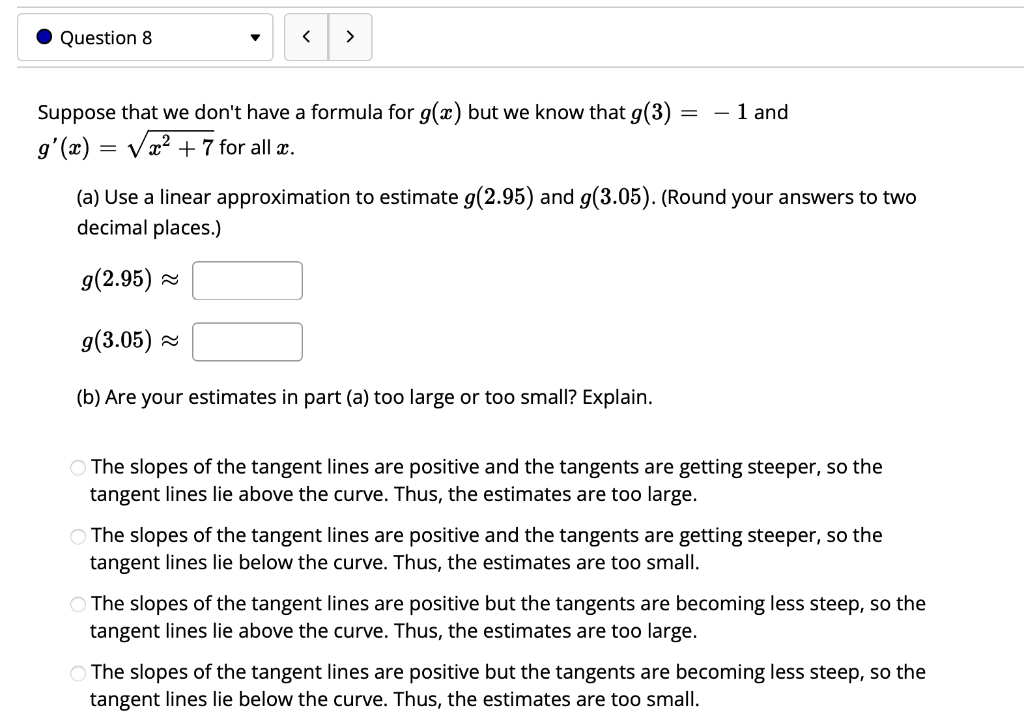Home /
Expert Answers /
Calculus /
suppose-that-we-don-39-t-have-a-formula-for-g-x-but-we-know-that-g-3-1-and-g-prim-pa127
(Solved): Suppose that we don't have a formula for \( g(x) \) but we know that \( g(3)=-1 \) and \( g^{\prim ...
Suppose that we don't have a formula for \( g(x) \) but we know that \( g(3)=-1 \) and \( g^{\prime}(x)=\sqrt{x^{2}+7} \) for all \( x \). (a) Use a linear approximation to estimate \( g(2.95) \) and \( g(3.05) \). (Round your answers to two decimal places.) \( g(2.95) \approx \) \( g(3.05) \approx \) (b) Are your estimates in part (a) too large or too small? Explain. The slopes of the tangent lines are positive and the tangents are getting steeper, so the tangent lines lie above the curve. Thus, the estimates are too large. The slopes of the tangent lines are positive and the tangents are getting steeper, so the tangent lines lie below the curve. Thus, the estimates are too small. The slopes of the tangent lines are positive but the tangents are becoming less steep, so the tangent lines lie above the curve. Thus, the estimates are too large. The slopes of the tangent lines are positive but the tangents are becoming less steep, so the tangent lines lie below the curve. Thus, the estimates are too small.
Expert Answer
given that the function is defined as g?(x)=x2+7 and g(3)=?1 at x = 3, g?(3)=32+7=16=4
